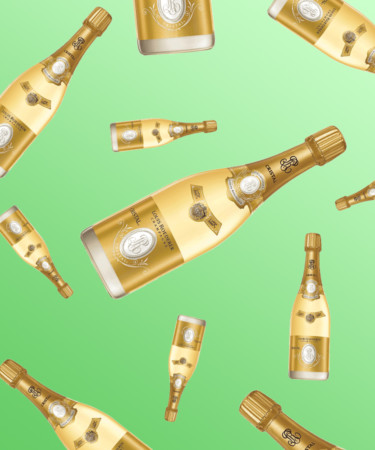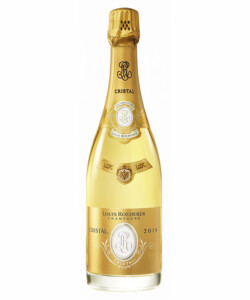
From its opulent packaging to its ubiquity in pop culture, Cristal Champagne has become synonymous with luxury. It’s name-dropped in the songs of countless artists from A$AP Rocky to Drake to Lana Del Rey, and some bottles of the precious bubbly can even soar to the heights of nearly $26,000. If you’re wondering whether this Champagne’s clout is warranted, read on for 10 things you should know about Cristal.
Cristal was first created for a Russian Tsar.
Cristal was first created by Louis Roederer for Alexander II in 1876. As Russia became less stable and Alexander feared assassination, he commanded that his Champagne be bottled clear and with a flat bottom in order to ensure no bombs were placed in the punt beneath the bottles. After the reign of the tsars ended with the Russian Revolution in 1917, Roederer kept producing the Champagne, and it eventually hit the commercial market for “commoners” in 1945 (though Cristal is far from a common beverage).
It’s a family affair.
Cristal remains in the Roederer family to this day. The estate is currently overseen by Frédéric Rouzaud, the seventh generation of the family. This makes Louis Roeder the largest independent and family-owned Champagne house in the world.
Quality over quantity.
Cristal has an annual production of about 300,000 to 400,000 bottles per year. This is a pretty low number, considering other high end brands like Dom Pérignon produce around five million bottles every year.
It’s always vintage.
Cristal is cellar-aged for six years, and then held for another eight months after its dégorgement (the process of removing sediment from the Champagne). The vines used to grow Cristal’s grapes are also old — they must be a minimum of 25 years of age, but some are as old as 60. The older a vine is, the less fruitful it is, which contributes to the rarity of Cristal.
Cristal likes to keep it old school.
In an effort to return to tradition and make the Champagne-making operation as organic as possible, Louis Roederer began farming biodynamically in 2000. Not only did the company halt the usage of pesticides in their vineyards, but it began tilling the land with horses.
Cristal’s commonalities with crystals go beyond its sparkling appearance.
Cristal’s bottles used to be made with leaded crystal. “Crystal” in French is “cristal.”
Its gold wrapping isn’t just for show.
Cristal’s gold wrapping has historic roots — in the 19th century, a system of color-coding was used to signify a Champagne’s quality. Unsurprisingly, gold was used to denote the highest prestige. But there’s a scientific reason for this wrapping, too. The shiny cellophane is actually anti-UV, which protects the clear-bottled wine from damaging sun rays that can quickly cook a wine.
It’s so good, it breaks the rules of economics.
In 2002, Cristal was christened with a perfect 100-point score from Wine & Spirits Magazine, a virtually impossible feat for even the most prestigious of wines. And it doesn’t stop there. Cristal is considered a Veblen Good, an economic term describing a product with a demand proportional to its high price, thus contradicting the law of demand. These high prices deem such products status symbols and signs of luxury. In other words, the thirst is real.
Tupac gave Cristal his stamp of approval.
Even Tupac loved the stuff. The infamous rapper created a cocktail, the “Thug Passion,” which combines Cristal with Alizé Gold Passion liqueur.
The rap and hip-hop community boycotted Cristal.
Like many other celebrities, Jay-Z was once a huge supporter of Cristal. However, things changed in 2006, when Frédéric Rouzaud made a statement condemning the brand’s positive reception from the hip-hop community. He followed the statement in questioning “but what can we do? We can’t forbid people from buying it.” Many celebrities, including Jay-Z deemed the comments racist and vowed to never drink, serve, or promote the stuff in any of his clubs ever again. Jay-Z later went on to create his own luxury Champagne brand — Armand de Brignac (known as Ace of Spades) — in retaliation.

